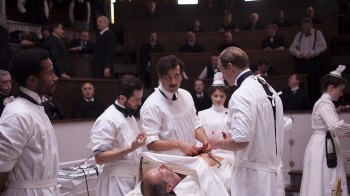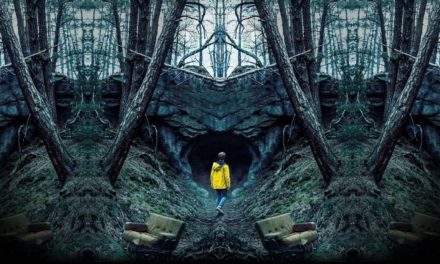January 2009.
“I am a believer in evolution not revolution.”
“Things are changing and its really important that we make sure that as they change, they change for the better and Dr. Horrible was just a little bit about that-about putting power in different hands.”
Joss Whedon at Comic Con 2008
The excitement over Joss Whedon’s Dr. Horrible’s Sing-Along Blog is a fascinating new media phenomenon as, for many, it highlights the potential new path for television, in which TV ceases to be TV. The links with television are of course Whedon’s own successful career as a TV writer/producer. Dr. Horrible is seen by many to be Whedon’s return to television, pre-empting the upcoming broadcast of his new series Dollhouse (Fox, 2009-). Furthermore, Joss Whedon approached the streaming of Dr. Horrible as television. The serial, described by Whedon as a ‘web mini-series’, became available for free streaming in three daily instalments, beginning on the 15 July 2008 (cited in Littleton, 2008). Making the programme available for free in those initial days, surrounded the serial with event status, much like television. You had to be in the right place and right time to be the first to see the next instalment.
But is this the future of television? In many ways, Dr. Horrible feels more multi-media than specifically televisual, tying in to the transmedia storytelling to which David Lavery refers. The sequences of Dr. Horrible (Neil Patrick Harris) delivering his blog to a web cam in first person direct to camera address are completely in keeping with the internet aesthetic. But once the direct address is broken, we leave the blog space and enter his narrative world, shot with the intimacy of television through an emphasis upon close ups and medium shots and MTV style musical numbers. Interjected within this style are notable cinematic flourishes, such as the extreme long shots of a giant Dr. Horrible towering over and stomping through the city a la Godzilla (Ishiro Honda, Japan, 1954) (or in televisual terms the giant cat in British cult series The Goodies – BBC, 1970-81). In typical Whedon form Dr. Horrible is a curious hybrid.
More significantly, Whedon’s aspirations to create “a new form of artistic community that involves all of you guys [the fans] and all of us [the writers, production crew, actors etc] and maybe not so much some other people [the network executives]” (2008), one in which a programme is provided the freedom to find its audience without the threat of cancellation, is commendable and clearly an artistic ideal for television. But is it possible for anyone other than Joss Whedon to attain? His previous TV work provided him with the goodwill and respect from cast, crew and technicians necessary to elicit their contribution to the project with the promise of an eventual financial return. Furthermore, the initial success of Dr. Horrible in which the servers crashed because of sheer demand was in large part due to the phenomenal cult following that Whedon has developed through his previous television programmes Buffy the Vampire Slayer (WB/UPN, 1997-2003), Angel (WB, 1999-2004) and Firefly(Fox, 2002). Its initial success is as attributable to his fans as to Whedon – much like the regeneration of cancelled TV series Firefly into the feature film Serenity (Joss Whedon, USA, 2005) can be partially credited to the proactive fans support for Firefly that made a cinema release appear viable. While it is enticing to see this as the bright new future for television, is this not perhaps more a sign of the future of cult media, where cult figures like Whedon are able to engage their fans with a wide range of media such as television, film, comics and the internet? Cult audiences will go where Whedon takes them, but will everyone else?
Having said this, Dr. Horrible’s position as a hybrid of low budget cult production, in which Whedon and his friends decided to get together and ‘put on a show’, and a canny example of synergy in which the free ‘televisual event’ is used to generate interest in the ancillary products, in this case the CD and the DVD, perhaps has shown how new television media can develop. But if this is the case, it won’t be long before the networks are following Whedon’s lead and the power might be back in their hands again.
Stacey Abbott is Senior Lecturer in Film and Television Studies at Roehampton University. She is the author of Angel (Wayne State University Press) and the editor of The Cult TV Book (I.B. Tauris), both forthcoming in 2009.
Cynthia Littleton (2008) ‘Screenwriters Strike Back: Dr. Horrible leads Web Charge’ Variety 18 July.





